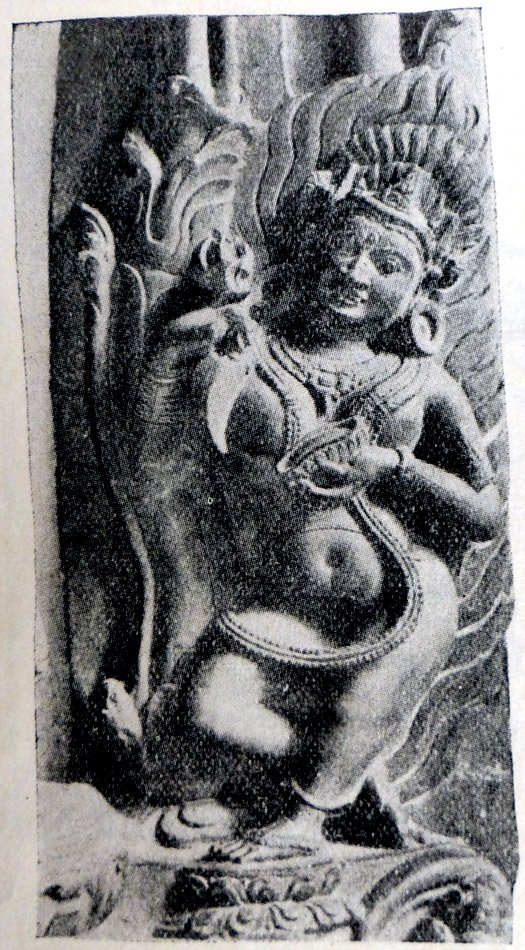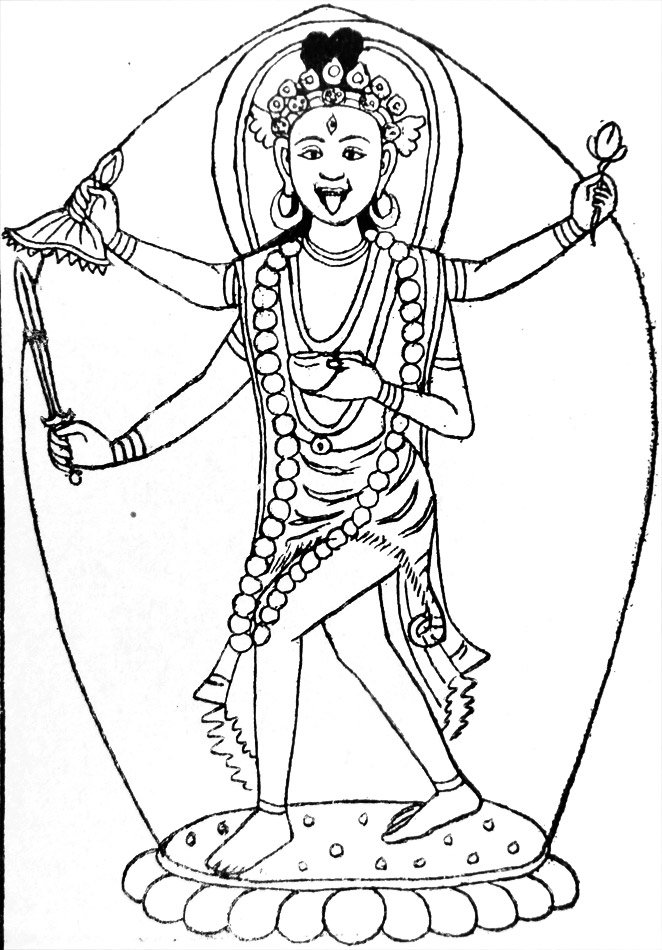The Indian Buddhist Iconography
by Benoytosh Bhattachacharyya | 1958 | 51,392 words | ISBN-10: 8173053138 | ISBN-13: 9788173053139
This page contains an iconography image of Emanations of Akshobhya: Ekajata and represents figure 138-139 of the book Indian Buddhist Iconography, based on extracts of the Sadhanamala English translation. These plates and illustrations represent either photographs of sculptures or line-drawing reproductions of paintings or other representations of Buddhist artwork.
Figure 138-139 - Emanations of Akṣobhya: Ekajaṭā
 Figure 138: Ekajaṭā |
 Figure 139: Ekajaṭā |
Ekajaṭā is one of the most powerful goddesses in the Vajrayāna pantheon. It is said in the Sādhanamālā that if a person listens to her mantra but once, he is at once freed from all obstacles and is attended always with good fortune, his enemies are destroyed and he becomes religiously inclined, even attaining the level of a Buddha. Four Sādhanas in the Sādhanamālā dovoted to the worship of Ekajaṭā, describe three different forms of the goddess. Ekajaṭā may have one face with two, four or eight arms.
The main features of the goddess are given in one of the Sādhanas, the Colophon of which asserts that the Sādhana has been restored from Tibet (Bhoṭa) by Ārya Nāgārjuna, who was famous in the mediaeval ages as one of the eighty-four Siddhapuruṣas of India.
This general description only applies to the following three forms of Ekajaṭā with one face and two, four or eight arms:
(i) When two-armed, Ekajaṭā carries the Kartri and the Karoṭa (skull-cup) in her two hands (Fig. 138).
(ii) When four-armed, Ekajaṭā carries the arrow and the sword in the two right hands and the bow and the skull in the two left. In two other Sādhanas describing the four-armed variety, her appearance undergoes a slight modification. Here she holds in the first pair of hands the Kapāla and the Kartri, while the other pair shows the Utpala and the sword. She may hold also the rosary instead of the sword (Fig. 139).
(iii) When eight-armed, Ekajaṭā carries the sword, the arrow, the Vajra and the Kartri in the four right hands and the bow, the Utpala, the Paraśu and the skull in the four left hands.
Images of Ekajaṭā are found in almost all Buddhist countries of the North. She is known in Tibet as well as in China.
Colour: blue;
Appearance: terrible;
Attitude: pratyālīḍha;
